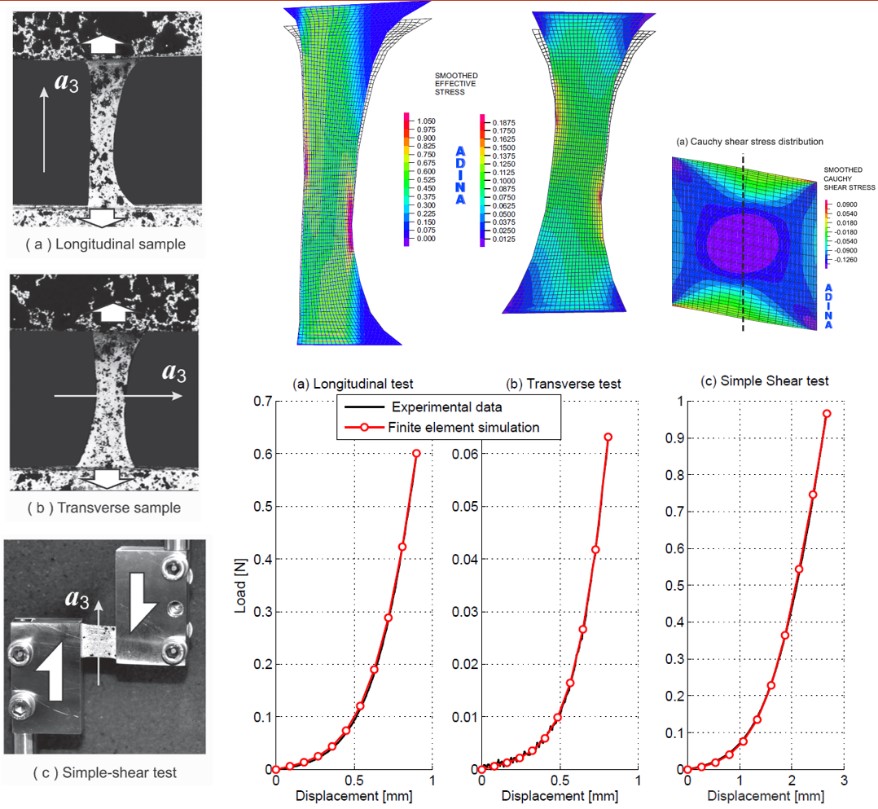Date/Time
Date(s) - 09/19/2016
3:00 pm
Abstract:
The main difference between hard and soft solid materials from a continuum perspective is that soft materials are able to sustain large elastic deformations without breaking apart. From a microstructural perspective the difference relies in the scale (microscopic or mesoscopic) that mostly determines the material behavior. In soft materials, it is typical the presence of structures at the mesoscopic scale: polymeric chain structures in polymers or elastin-collagen arrangements in biological tissues. Much research is directed to develop and enhance the understanding of the mechanics of these materials. One of the main purposes is to improve the predictability of the behavior of these materials for any geometry and under any boundary condition.
 One of the applications of accurate modeling of soft materials is in medicine. Most of the human body is made of different soft tissues with very different internal structures which result in also remarkable different behavior for different organs, locations and individuals. Accurate efficient modelling will be imperative in performing real-time simulations of clinical surgery, rehabilitation, and even impacts and damage in the human body. This type of modelling may also be used at the mesoscale, to model the behavior of the components, or in the behavior of cells.
One of the applications of accurate modeling of soft materials is in medicine. Most of the human body is made of different soft tissues with very different internal structures which result in also remarkable different behavior for different organs, locations and individuals. Accurate efficient modelling will be imperative in performing real-time simulations of clinical surgery, rehabilitation, and even impacts and damage in the human body. This type of modelling may also be used at the mesoscale, to model the behavior of the components, or in the behavior of cells.
In this presentation we will see the novel WYPIWYG approach to model the behavior of soft materials. We will see that it is a simple yet powerful method capable of accurately represent the behavior of soft materials and readily available for large scale finite element analysis. Some applications to the modelling of soft biological tissues will be presented.
Bio:
Francisco J. Montáns is a Professor at the Universidad Politécnica de Madrid (UPM), Spain. He studied three years in Universidad de Vigo and finished his Engineer Degree Major (Mechanics) at UPM. While working in industry, he earned a Ph.D. in structural dynamics also at UPM. He did a post-doc at Stanford University in soil mechanics. He has held Assistant and Associate Professorships at University of Castilla-La Mancha, Spain. After spending two semesters as Visiting Scholar at MIT, he obtained a full professorship at UPM and is serving in the Aerospace Engineering School. He has been head of the one of the main Spanish research funding programs in Engineering. Prof. Montáns is now Visiting Professor at MAE-UF. His current research interests, in the field of computational mechanics, is the constitutive modelling of soft materials.